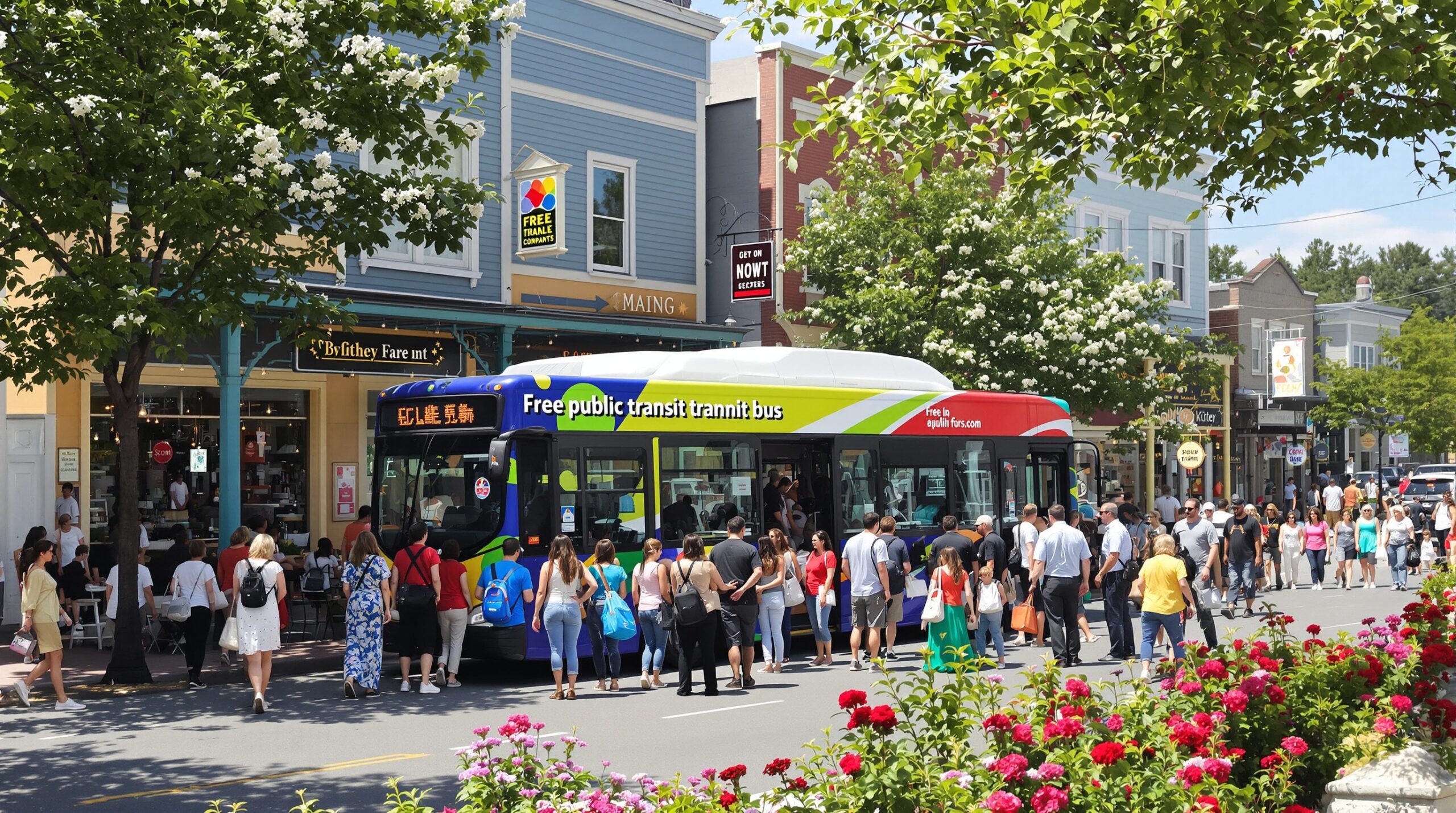Small towns across the United States are experimenting with free public transit as a tool to stimulate downtown business districts. Historically, these towns have relied on cars and parking to bring consumers to their local merchants. Now, with declining downtown foot traffic, some leaders believe free bus and shuttle services might spark a commercial revival. Towns widely spaced in geography and population are reporting early results, hoping to share lessons and inspire others.
The Reason for Free Public Transit Trials
Decreased pedestrian presence downtown remains a problem for many small towns. The shift to online shopping and big box retailers worsens the issue for independent businesses. Town halls worry that closed storefronts and low sales could become permanent. By removing fares from public transit, officials want to reduce barriers to visiting downtown. The goal is to make trips affordable and convenient, even for residents without cars or those who prefer not to drive.
Case Study: Pittsfield, Massachusetts
Pittsfield, a city of about 43,000 in western Massachusetts, implemented a pilot program offering free bus rides on weekends. Downtown commerce in Pittsfield suffered during the pandemic, with foot traffic and restaurant visits sharply reduced. City officials worked with the Berkshire Regional Transit Authority to fund and market the initiative. The program coincided with downtown festivals and seasonal events to attract more people and measure economic impact.
Business owners have reported an uptick in visits from new and returning customers. Restaurant reservations and walk-in sales increased during the free-fare periods. The pilot also helped residents who do not own cars to participate in community events and shop locally. Mayor Linda Tyer has called the trial “an important investment in our people and our small business community.” Other New England towns are closely monitoring Pittsfield’s model.
Lessons from Wilson, North Carolina
Wilson, North Carolina, took a unique approach by launching a microtransit service called RIDE. This on-demand, app-based shuttle system replaced fixed-route buses. Funded largely by municipal and federal grants, RIDE remains free to riders during its pilot phase. The service focuses on the downtown corridor but extends to residents anywhere in the city limits. This flexibility allows more people to access stores, cafes, and public events without worrying about parking or fares.
According to Wilson’s city manager, participation exceeded early projections by 50 percent. Downtown restaurants noted more lunchtime activity, and local boutiques reported new faces among their clientele. Town leaders shared data with neighboring counties and hope that increased customer traffic will make small business ownership more viable. The city is now considering keeping RIDE free through sponsorships and partnerships.
The Economic Rationale for Free Transit
Proponents of free transit argue that eliminating fares has a relatively small cost compared to the economic benefits. Residents and workers save money, which can be spent at local merchants. Studies suggest that higher downtown traffic leads to more spontaneous purchases and higher overall sales. Town planners say that every dollar invested in transit returns several dollars in increased commerce and tax base stabilization.
Business associations and chambers of commerce often partner with local governments to support these fare-free transit pilots. They point to research showing a direct link between transportation access and small business health. Several towns provide free transit only at times of highest business activity, such as weekends or festival days, to amplify return on investment. Some even expand service hours to better serve shift workers and evening diners.
Challenges and Concerns in Implementation
Removing fares from transit systems presents financial challenges. Fare revenue, though limited, often helps cover operations and maintenance. Cities must secure alternative funding through grants, local taxes, or business sponsorships. Finding enough drivers and maintaining a reliable schedule can also be difficult in rural or thinly populated areas. Additionally, free service can attract higher ridership than expected, straining resources and requiring adjustments in frequency or vehicle size.
Managing expectations remains crucial for local governments and business leaders. Not every business will see immediate increases in revenue. Some locations may benefit more than others, depending on proximity to stops or transit routes. Officials urge patience and regular data collection to assess results and guide decision-making. Many towns include sunset clauses or periodic reviews in their free transit programs to ensure accountability and long-term viability.
Environmental and Social Benefits
Besides economic revival, free public transit offers environmental benefits for small towns. Reduced car use means less congestion and lower emissions in downtown neighborhoods. Fewer cars parked on main streets open up space for outdoor dining, community markets, or public art installations. Improved air quality and calmer traffic make downtown areas more welcoming for pedestrians and cyclists. These changes encourage repeat visits and longer stays downtown.
Free transit also enhances social equity by serving those who cannot afford private vehicles. Elderly residents, young people, and low-income families gain improved access to employment, education, and local amenities. This greater inclusivity strengthens the social and economic fabric of the community. Small town leaders emphasize that successful commerce depends not just on dollars, but on inclusive participation in downtown life.
Looking Ahead: Will Fare-Free Transit Last?
Early indicators suggest that fare-free public transit can spur downtown commerce in small towns. The future, however, depends on sustained funding and adaptability. Towns must continue to collect data and tailor services to local needs. Collaboration between governments, business leaders, and residents supports effective implementation. Meanwhile, interest in fare-free models is growing beyond city limits, as suburbs and rural communities look for ways to foster economic recovery and social connectivity.
By focusing on accessibility, sustainability, and commerce, small towns hope to create vibrant downtowns resilient to future challenges. The lessons learned from these transit pilots might shape the future for communities facing the dual pressures of economic change and shifting mobility patterns. Free public transportation could become a standard tool in the economic development toolkit for America’s small towns.

